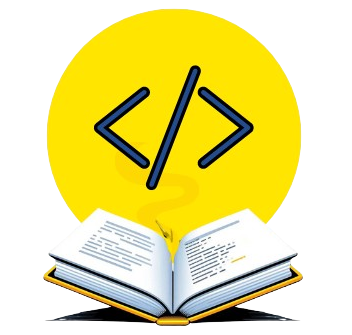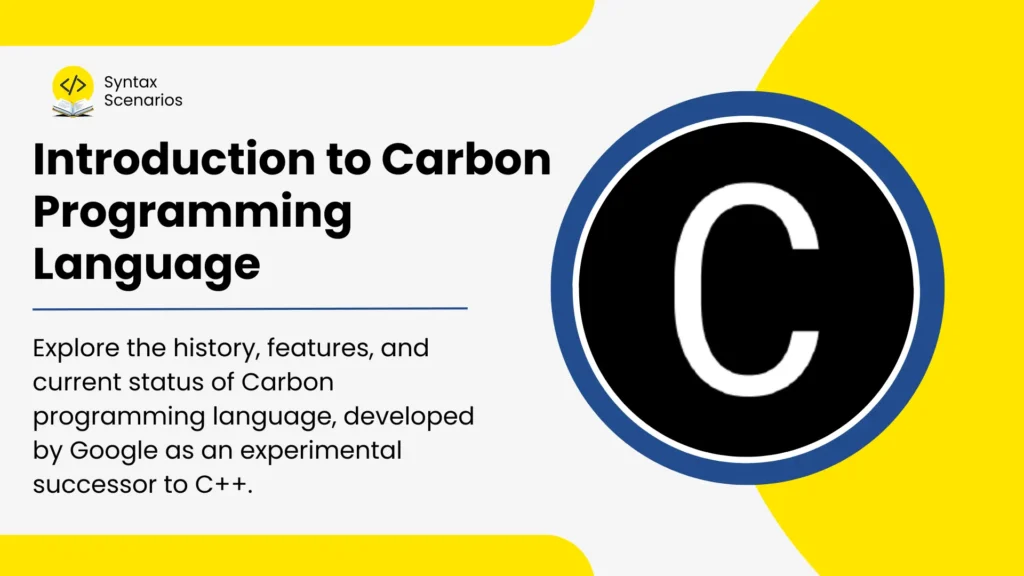Explore the history, features, and current status of Carbon programming language, an emerging language developed by Google as a successor to C++.
Table of Contents
History of Carbon Programming Language
Carbon language was developed by Google and introduced in July 2022. It is an experimental language that aims to address the complexities and memory management issues of C++ while maintaining compatibility with it. Carbon is designed to be simpler, safer, and more efficient, making coding easier and more secure. Though still in development, Google and the programming community are actively working to refine and expand Carbon’s features, aiming to create a robust and modern alternative to C++.
The Story – How Carbon Programming Language Was Named as Carbon
The Carbon language got its name because it inspired the element carbon. Carbon is a building block of life, used in everything from pencils (graphite) to diamonds, so the creators wanted their language to be strong, versatile, and essential in software development.
They chose the name “Carbon” to reflect these qualities, hoping it would symbolize a language that can be used in many applications, just as carbon is used in many forms. The idea was to create a programming language as fundamental to technology as carbon is to life. So, Carbon was born, aiming to be a solid foundation for building robust and complex software systems.
Why build Carbon Language?
Carbon is being created as a replacement for C++ to tackle its long-standing issues and difficulties with updates. Instead of trying to fix C++ bit by bit, Carbon starts fresh with modern features like a strong generics system, organized code, and a simple structure. It aims to keep C++’s speed while making it easy for existing C++ projects to switch over smoothly. Carbon is designed to be easy for C++ developers to learn and use, supporting familiar software design methods. Like how TypeScript improved JavaScript and Kotlin upgraded Java, Carbon aims to bring C++ up to date and make it easier for everyone involved to work with.
Key features of Carbon Programming Language
Modern Syntax and Readability
Carbon’s modern syntax is designed to be clean and easy to read, making code straightforward and understandable, much like following simple instructions in a recipe. For example, if you’re making a sandwich, the steps are clear and concise: take two slices of bread, spread butter on both, add a slice of cheese, and put the slices together. Similarly, Carbon’s syntax allows developers to write easy-to-follow and implement code, ensuring that even complex tasks are broken down into simple and readable steps. This readability enhances productivity and makes it easier for others to understand the code.
Compatibility with C++
Bi-directional interoperability in Carbonlanguage is like being fluent in two languages. Imagine you have a friend who speaks English and another who speaks French. You can talk to each of them and understand what they say, and they can understand you, too. Similarly, Carbon can communicate smoothly with C++ code. It’s like having different parts of a project, even if they’re written in various languages, working together efficiently, just like friends from different places chatting and understanding each other perfectly.
Fast Performance
Fast performance in Carbon means that programs written in Carbon run quickly and efficiently. It’s like having a race car that accelerates smoothly and reaches high speeds without any slowdowns. This speed is achieved through smart optimizations and careful computer resource management, ensuring that apps built with Carbon respond quickly to user actions and handle data efficiently.
Object Oriented Language
Carbon is an object oriented language that organizes code by breaking it into smaller parts, like building blocks in a toy set. Each part (object) has a specific job and can be combined with others to create complex programs. This approach helps developers reuse code easily, maintain software more effectively, and build applications that work like real-world objects.
Automatic Memory Management
Memory management in Carbon ensures efficient use of computer memory, preventing issues like memory leaks and crashes. It includes automated garbage collection, which automatically cleans up unused memory, like clearing out old photos or apps on your phone to free up space. This keeps software fast and stable, allowing developers to focus on creating robust applications without manual memory management.
Concurrency
Concurrency in the Carbon programming language allows a program to do many things simultaneously, making it faster and more efficient. Imagine a restaurant kitchen where multiple chefs work on different parts of a meal at the same time. One chef chops vegetables, another grills meat, and another makes the sauce. By working together at the same time, the meal is prepared faster. Similarly, concurrency in Carbon lets different parts of a program run at the same time, making the program run faster and more efficiently.
Will Carbon Replace C++?
Just like Kotlin is a successor to Java and TypeScript to JavaScript, Carbon does not seem to replace C++. Instead, it will coexist with C++, offering developers a choice. Just like developers are still using Java despite of the existence of Kotlin. Similar to how C++ did not replace C, Carbon will provide an alternative with enhanced capabilities. The future of Carbon is an intresting topic, full of potential and possibilities. Only time will reveal the extent of Carbon’s popularity and acceptance within the programming community.
Carbon vs. Other Programming Languages
| Aspect | Carbon | C++ | Rust |
|---|---|---|---|
| Performance | Aims to be as fast as C++ | High performance | High performance |
| Interoperability | Designed to work well with existing C++ code | Yes | No |
| Memory Management | Automatic | Manual | Automatic |
| Concurrency | Will support modern ways of doing many things | No | Yes |
Evolution status of Carbon
Carbon Language is currently in the testing phase without a full compiler yet, but you can try out a demo version on compiler-explorer.com. The project aims to see if it can replace C++ and get attention from the C++ community. It’s set up as an open-source project with clear rules for how it’s managed and developed. The demo tool, Carbon Explorer, lets developers test and study how the language works. The team is currently focused on creating a compiler and tool package that can turn Carbon and, eventually, C++ code into programs you can run on your computer. They want these tools to work smoothly together, making it easy for developers to switch to Carbon if they want to. They’re welcoming contributions to improve these tools and plan to release an early version of Carbon soon for more people to try out and give feedback.
Carbon’s GitHub Repository
As the Carbon programming language is still developing and experimental, you can keep visiting its official GitHub repository for documentation, design, implementation, updates, and related tools.
Conclusion
Carbon programming language aims to fix problems with C++, making it easier for programmers to write fast and efficient software. It helps handle memory better, works well with existing C++ code, and supports modern ways of handling many tasks at once. Overall, Carbon is designed to make programming faster and more effective for developers.


This is a really helpful blog! Thank you
Thank you Haris! Stay tuned for more.